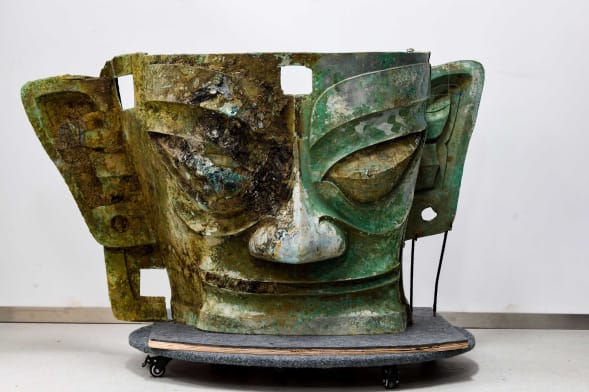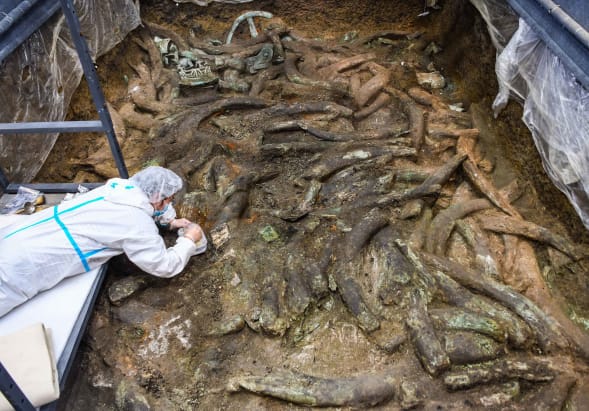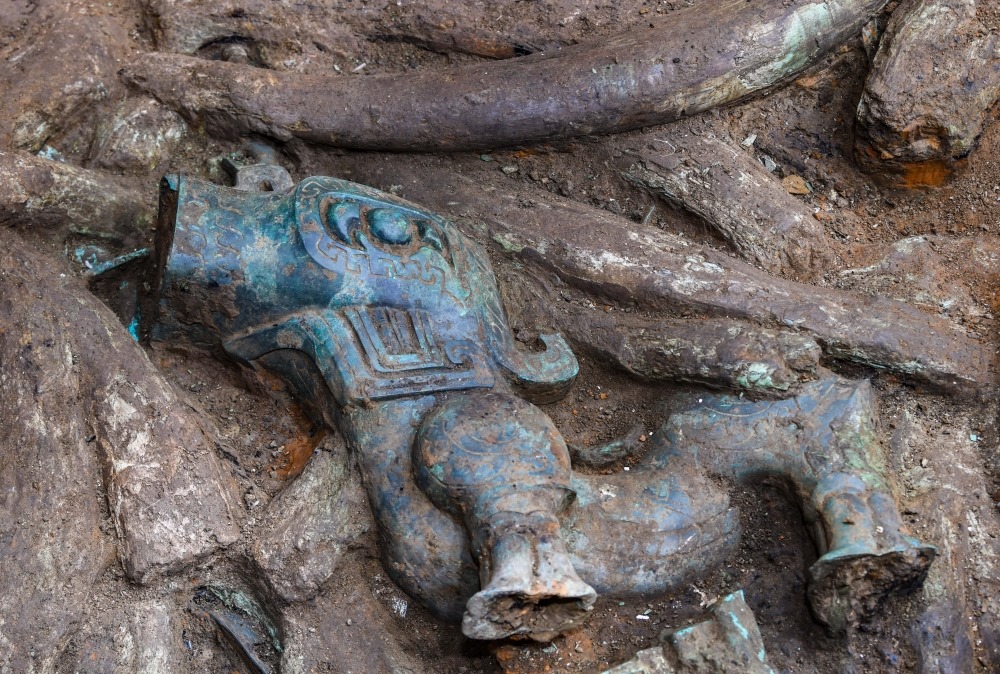Gold mask among 3,000-year-old relics unearthed in southwest China
Earlier this year, archaeologists were awed when they discovered the partial remains of a 3,000-year-old gold mask at the Sanxingdui dig in China’s Sichuan province.

Weighing in at half a pound, the mask was considered unprecedented. But, this month, experts’ expectations were bested once again when another gold-mask was found at the same site—this one far more complete.
Last Thursday, the mask was excavated in the sacrificial pits of Sanxingdui, which have yielded numerous artefacts since they were initially found in 1929.

According to the Chinese state-run news agency Xinhua, the mask is more than one foot long and was crafted by ancient people. While many objects found at Sanxingdui are known to be thousands of years old, archaeologists have not yet said when the mask was made.
“The new discoveries demonstrate once again that imagination and creativity of the ancient Chinese far surpassed what people today had expected,” Tang Fei, chief of the Sichuan Provincial Cultural Relics and Archaeology Research Institute, told Xinhua.
The mask was discovered this month as part of a cache of more than 500 pieces that also includes a jade knife, a bronze head, and a zun, or an urn that would have held wine used in rituals in ancient China.

There are also some bronze objects that have not yet been identified because they are “so unique that even we don’t know how to name them,” Zhao Hao, an associate professor at Peking University, told Xinhua.
The new trove brings the total number of objects found at Sanxingdui to around 2,000.
Some experts within China have regarded the sacrificial pits there as being of extreme archaeological importance—even more significant, perhaps, than the Terracotta Army, which was buried Qin Shi Huang, the first emperor of China, sometime around 210 B.C.E. in Shaanxi.





